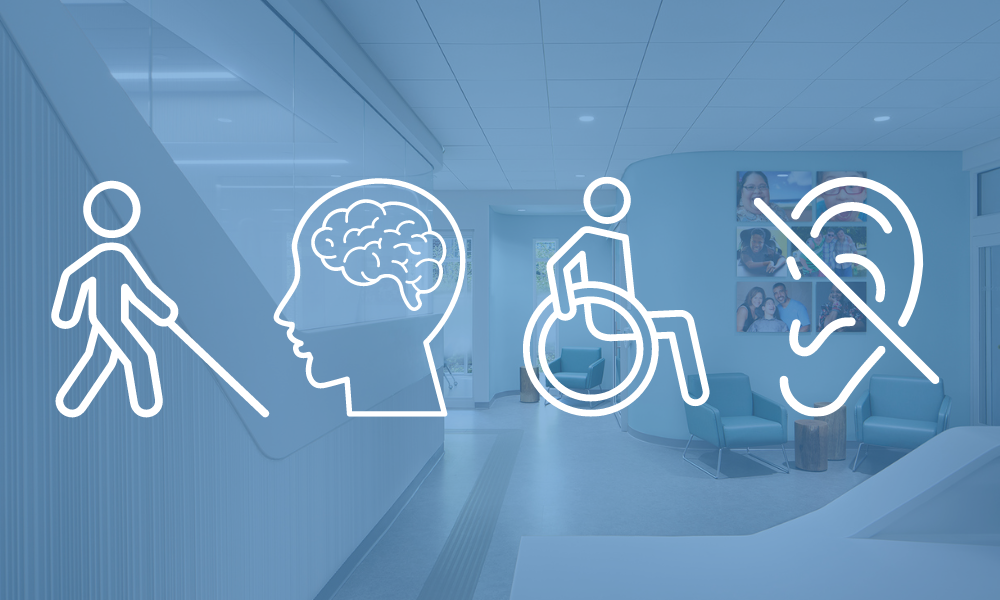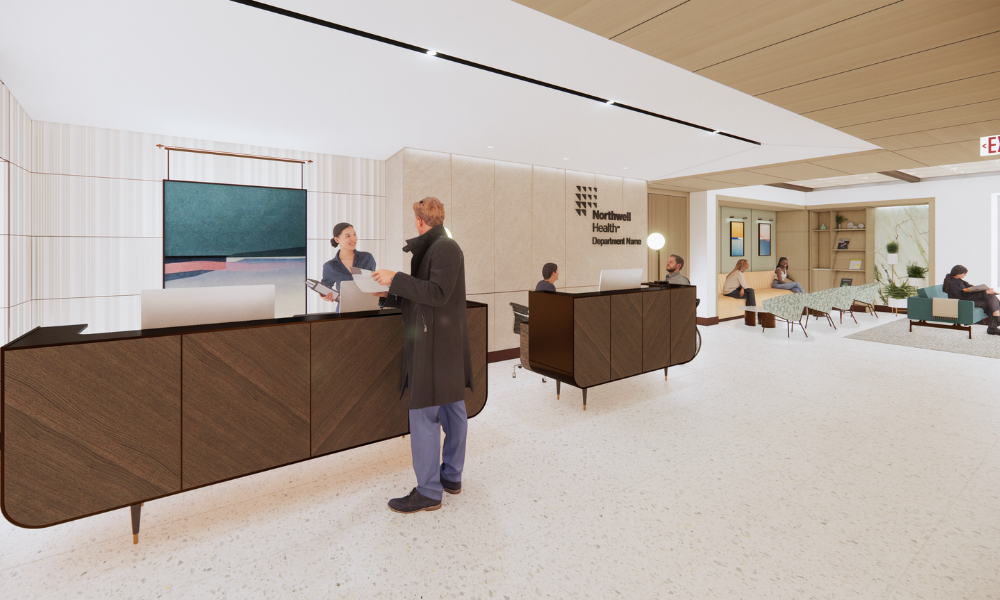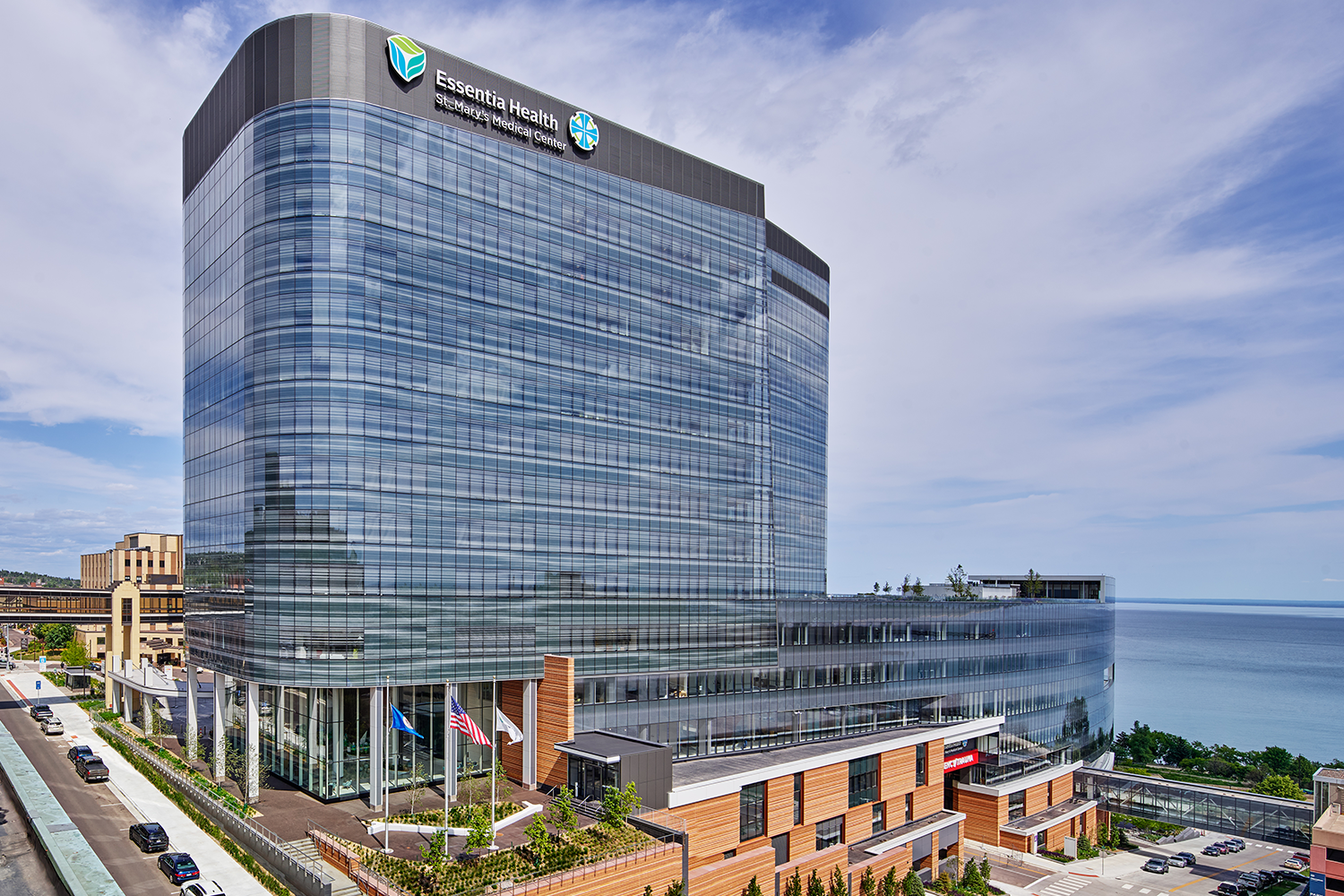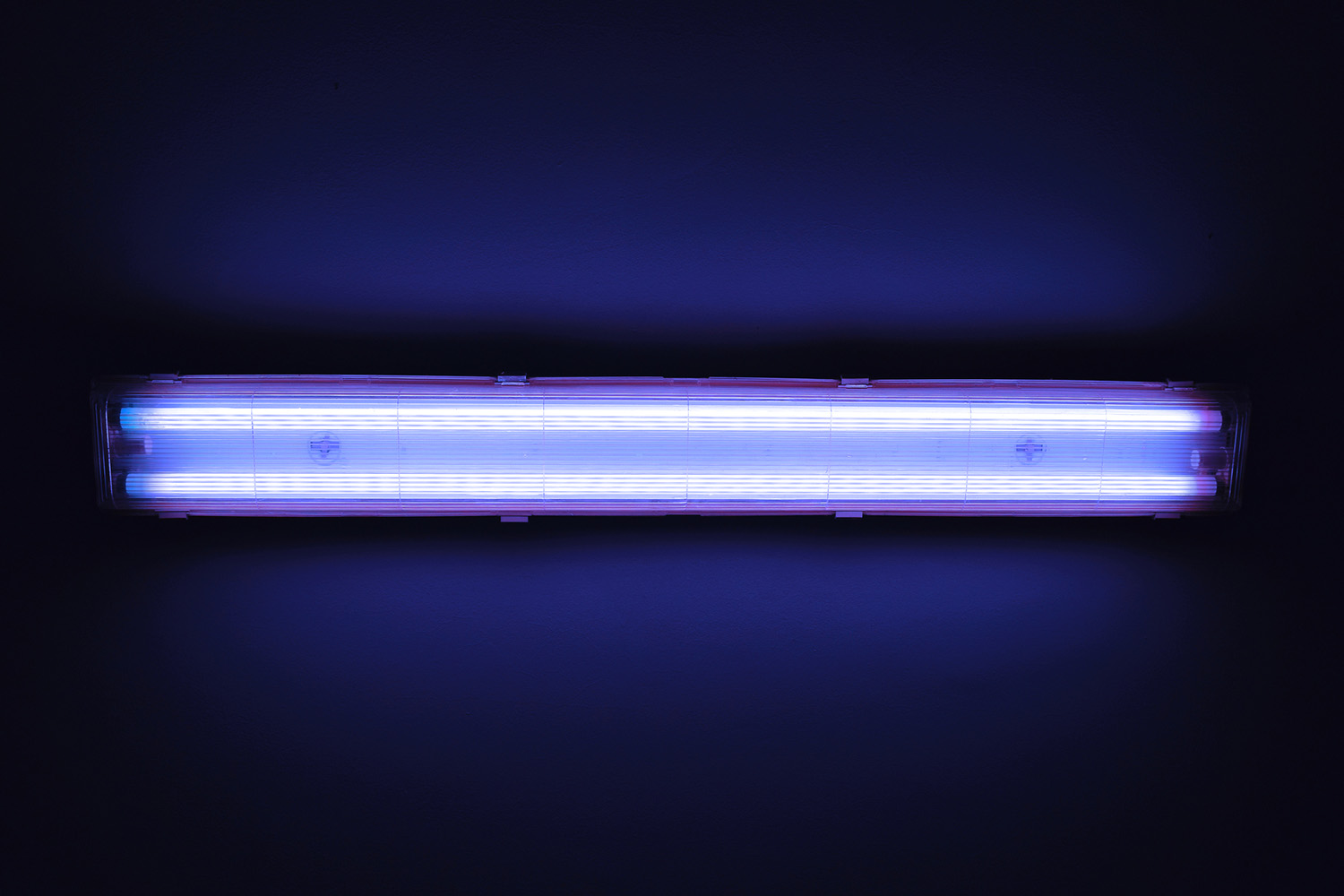
Ultraviolet Light: Next Line of Defense for Infection Control
The use of ultraviolet light as a disinfection protocol isn’t a new concept, and over the past few decades has evolved into several technologies, each with their benefits and limitations. But in the wake of COVID-19, should we consider UV as a useful supplement to traditional disinfecting methods?
In a time when infection control has rapidly become a leading priority, we aim to seamlessly integrate sanitization protocols into our typical routines without too much disruption of our everyday lives. UV wavelengths are known to have disinfecting properties, and with the appropriate technology, can be applied to any space to mitigate the spread of disease. While many new UV technologies are being developed, UV lighting has been a mainstay in buildings for over 70 years.
Used almost solely in hospital and lab spaces in the past, UV lighting is capable of disinfecting both the air and surfaces, but it comes with its limitations. Consider UV light the Lysol spray of architectural-grade disinfecting measures. While the light can disinfect rooms from pathogens it is not able to penetrate coverings, like dust, and cannot disinfect soiled surfaces. As with any light, UV lighting works by line-of-sight and will require lamps to be located at multiple points in a room, or for portable sources to be moved throughout a space for appropriate disinfection. Overall, UV lighting is not a replacement for cleaning a room but a secondary measure to supplement cleanliness.
Like the sun, UV lighting can be harmful to the human body and will have degradative effects on architectural surfaces. Many UV products come with integral motion/presence sensors to ensure a room is empty before disinfection can begin and will cease operation should someone enter. If someone needs a room while under direct UV exposure, all occupants must be wearing appropriate PPE to avoid skin and retina damage. Rooms containing UV measures can expect to see effects on architectural materials such as paint, plastics, and shiny finishes. Additionally, unlike the sun where many UV wavelengths are absorbed by ozone in the atmosphere, direct exposure to germicidal ultraviolet (GUV) lamps may damage plants.
In terms of exposure, each pathogen has a different UV dosage, or fluence, required to provide an effective level of disinfection. As of June 16th, 2020, Signify together with the National Emerging Infectious Diseases Laboratories (NEIDL) at Boston University have shown that UV-C exposure can effectively inactivate the SARS-CoV-2 virus that is responsible for COVID-19. It is crucial to review the fluence necessary to kill/inactivate various pathogens before implementation as an insufficient fluence is wasted wattage being used by the facilities and can endanger occupants.
Developing UV Technologies
Within the Electromagnetic Spectrum, the Visible Light Spectrum ranges from 380-740nm (nanometers), and the Ultraviolet Spectrum ranges from 100-380nm. Various technologies have emerged on the market that use portions of the UV spectrum for disinfection purposes.

Near-UV
Near-UV utilizes the violet 405nm wavelength to provide disinfection. The 405nm wavelength can kill bacteria, mold, and fungi, but does not appear to have the same effect on viruses. As Near-UV does not emit actual UV wavelengths, typical building function may continue while being simultaneously disinfected. This has led many manufacturers to provide dual-functioning capabilities in fixtures (a disinfecting “white” light option, and/or an enhanced “UV” light option). Unlike UV light, which is invisible to human eyes, Near-UV light emits a violet hue. The required exposure time can range from 7 to 48 hours, depending on the pathogen, disinfecting-mode used, and space constraints. Near-UV may be referenced as “anti-microbial” light, among many other names, and at this time, it is the only functional UV technology developed as an LED.
Broadband UV
Broadband UV refers to the complete UV light spectrum. Utilizing the full spectrum destroys the DNA, RNA, and cell wall of the pathogen. Broadband UV can kill bacteria, mold, fungi, and can aid in inactivating viruses. Rooms should be unoccupied when disinfection occurs, and manufacturer reference material shows a shorter exposure time is possible when compared with Near-UV. Depending on the fluence and targeted pathogen, disinfection may happen in a 15-30-minute interval range. Regarding UV exposure from the sun, UV-A causes aging and wrinkling, while UV-B causes sunburn, so it is crucial to have appropriate PPE if activity must occur under UV light. UV-C is included in Broadband UV technology and on its own.
Germicidal Ultraviolet
Germicidal Ultraviolet, or GUV, consists primarily of the UV-C range of wavelengths. These are the shortest and most energetic wavelengths, and they are the most effective for disinfection. UV-C can kill bacteria, mold, fungi, and can inactivate viruses. Rooms should be unoccupied when disinfection is occurring, and UV exposure times are similar to Broadband UV recommendations. GUV may also be referred to as UVGI (Ultraviolet Germicidal Irradiation), which is when the process is applied to a given location.
A common misconception with UV lamps is that they emit ozone; no UV lamp emits ozone. Rather, UV radiation emitting from the source (typically below 240nm) interacts with oxygen in the air to create ozone. The peak creation of ozone occurs at 185nm, but many models of UV lamps use glass designed to block radiation under 200nm. UV lamps emitting 240-280nm wavelengths can also destroy the same ozone that they are creating. Although, in general, the levels of ozone produced will be low and break down quickly.
GUV LEDs are being developed for germicidal use, but they are still in the early stages of development. These LEDs are shown to be one percent efficient or less, but as more research is conducted, this efficiency will most likely increase and become more readily available.
Far-UV-C
Far-UV-C utilizes a specific range of the UV-C band (200-230nm). This is a topic still being heavily researched for its effectiveness and safety, but has been shown to have the same disinfecting qualities of GUV, and the deactivation rate of some bacteria and viruses are relatively high. Some studies have shown that continuous low doses have no effects on the human body, but the studies conducted on Far-UV-C lamps are inconsistent regarding its potential risk to skin. Regardless, the potential negative effects in Far-UV-C lamping are reduced when compared to GUV lamps.
Integrating UV into Architectural Environments
There are many ways that UV may be used to help disinfect portions of building systems and architectural surfaces, and the need for enhanced cleaning measures has become all the more important. UV lamps have been used to help prevent microbial growth in mechanical units, and there are products available on the market for in-room air cleaners that can also be integrated with lighting. There are portable UV products available as well that can be used by an end-user as part of cleaning protocols.
Upper-Room fixtures are louvered with bare GUV lamps used in rooms with high ceilings (8ft minimum), constructed in such a way to provide constant UV wavelengths to the upper portion of the room only. Rooms may be occupiable during disinfection, but this solution requires commissioning and testing to confirm no harmful wavelengths/UV exposure could endanger occupants. The ceiling reflectance must be considered before installing fixtures as a high reflectance may reflect harmful wavelengths downward, endangering occupants.
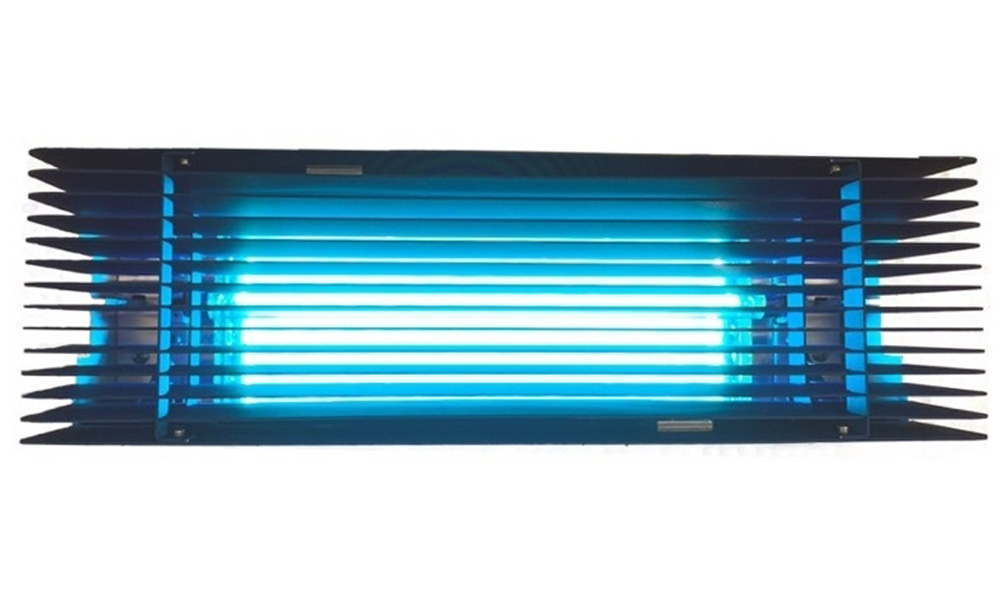
Large-scale portable equipment options are available with both Broadband UV and GUV options. The device will have to be moved around the room to hit all surfaces blocked by obstructions and should typically be vertically-oriented to provide coverage both above and below obstructions such as beds and desks.
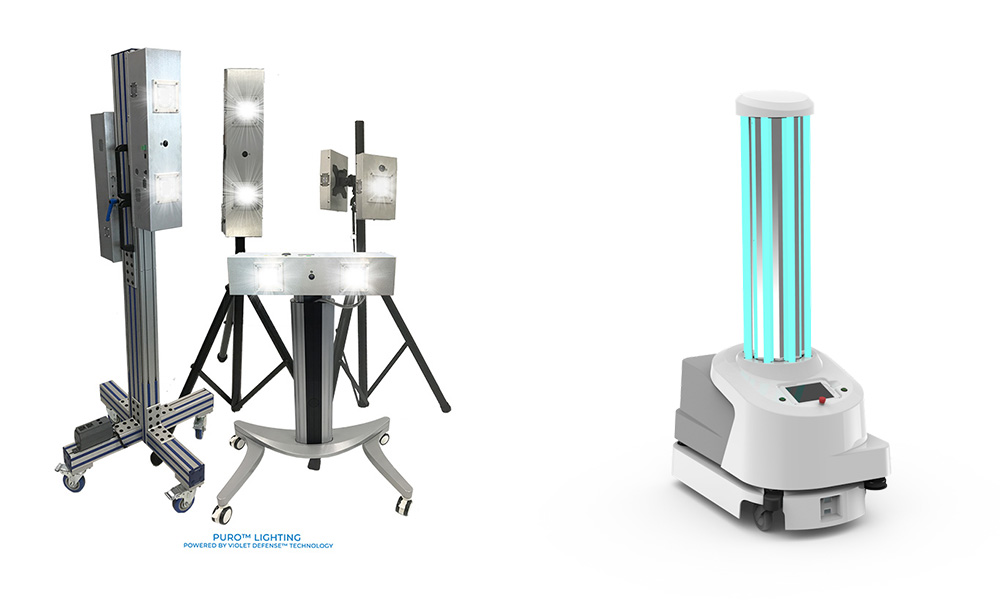
Handheld UV products are also available and are generally intended for small-scale object disinfection, such as for keys or cell phones. Required exposure times vary, and many researchers have noted that these devices should not be used to disinfect entire spaces, and even if used properly, may provide a false impression of effective disinfection. Many devices are provided with onboard sensing to prevent harmful exposure to one’s body.
UV-Integrated Lighting Products
Many manufacturers that have integrated Near-UV LEDs into existing fixtures, and with no UV lamps on board, it allows integration into nearly any form factor. Manufacturers are beginning to integrate Far-UV-C lamping into LED fixtures as well to create a functioning downlight that also has virus-inactivating properties. Many of these direct output fixtures have both new construction and retrofit options and would treat the “white” light and disinfecting light components as two separate circuits for controllability. Depending on fixture, functioning, and technology used, there could be a wattage increase between 30-100% per fixture.

Initial Cost
The products on the market today are still considered specialized items, but as the need for disinfection grows in importance, these technologies are becoming more mainstream. Larger lighting companies are researching and integrating these technologies into their products, and with that, we should eventually expect the added cost of UV technologies to decrease.
For the time being, these technologies can amount to a sizeable increase in the lighting budget if it is desired to have UV integration in architectural light fixtures. For the UV integrated light fixtures currently on the market, Near-UV will likely increase initial fixture costs by 1.5x-3x, while Far-UV-C will increase initial fixture costs by 8x-10x.
Upper-room UV-only fixtures can range between $200-$1500 for an individual fixture but also include the additional labor of installing and connecting power to a second set of fixtures. It is important to consider the cost impact of installation for two separate systems vs. a higher product cost for the integrated approach.
Maintenance Costs
In addition to the initial costs of UV fixtures, there are added maintenance costs to consider. Many UV fixtures have a one to two-year life expectancy, potentially less, and will require maintenance workers to be trained in proper handling/replacement of UV lamps. Some facilities that already implement UV lighting hire outside companies to specifically handle UV maintenance. It is important to consider the full life-cycle cost of these fixtures and consider a planned maintenance budget to allow for continuous use/operation.
Reviewing specific fixture characteristics are also important to confirm the UV component of the light fixture can be replaced separate from the architectural light, or if an entirely new fixture is required at the end of UV lamp life. This may vary product to product and can significantly impact the life cycle cost of ownership.
Implementing UV Protocols
Integrating UV lighting technologies into building designs is always possible, but the question is then which technology is right? UV light should be considered on a project-to-project basis as there is no one-size-fits-all solution, and a multi-layered approach is most likely necessary to achieve an appropriate level of disinfection and user-confidence.
Whenever the path of UV disinfection is chosen, it is important for building owners/managers to work with their Environmental Health & Safety (EH&S) department or an Industrial Hygienist to understand disinfecting protocols that may be required for a space, and the most appropriate UV technology/product to meet the space needs. Since wide-spread use of UV is not yet commonplace, standards and regulations of UV integration is limited, but will most likely develop as these solutions become more evolved and desirable. Exposure time, occupant uses and safety, PPE requirements, and programmatic space needs are all important factors to consider.
If proper steps are not taken to review clients’ needs, provide the appropriate technology, and adequately use/maintain fixtures, ultraviolet lighting measures may provide insufficient levels of sanitization and pose a health risk to those that could be exposed to dangerous wavelengths. When applied correctly, with the right technologies, UV light can serve as a useful supplement to traditional cleaning and disinfecting methods.
References
Bergman, R., Forbes, D., Jenson, P., Nardell, E., Saputa, D., Sliney, D., & Vincent, R. (2020, May 7). Germicidal Ultraviolet Disinfection in the Days of COVID-19. Illuminating Engineering Society. Retrieved from https://www.ies.org/standards/committee-reports/
Cooper Lighting Solutions. (2020, May 5). GUV - Frequently Asked Questions. Retrieved from Cooper Lighting Solutions: http://www.cooperindustries.com/content/public/en/lighting/resources/LightingStories/guv/faqs.html
End TB Transmission Initiative. (2017, September 1). Maintenance of Upper-Room Germicidal Ultraviolet (GUV) Air Disinfection Systems for TB Transmission Control. Retrieved from Stop TB Partnership: http://stoptb.org/wg/ett/assets/documents/MaintenanceManual.pdf
Healthe Lighting. (2020). The Science of Light. Retrieved from Healthe Lighting: https://healthelighting.com/pages/sanitization-science
Hubbell Lighting. (2020). Illumination with Disinfection, the Joining of Lighting Science and Microbiology. SpectraClean Antimicrobial Lighting.
PMC Lighting. (2020, May 6). Lighting for Health, Safety, and Wellness in the Post-Pandemic Era. PMC Lighting. New York, New York, United States of America: PMC Lighting.
Puro Lighting. (2020). The Truth about Germ-Killing Lights: Facts vs. Myths in a Growing Market. Puro UV Disinfection Lighting.
Sliney, D. H., & Others. (2020, April 15). Committee Reports. Retrieved from Illuminating Engineering Society: https://www.ies.org/standards/committee-reports/



